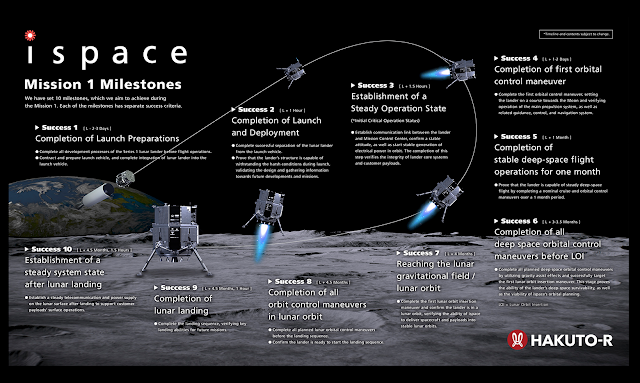ISS - Expedition 68 Mission patch.
Mar 3, 2023
Crew members aboard the International Space Station conducted scientific investigations during the week of Feb. 27 that included tracking how the human body adapts to space, examining the effects of light and fertilizer on dwarf tomato plants, and testing a microscope to analyze particles on the space station. NASA’s SpaceX Crew-6 mission launched to the station on March 2, starting a six-month mission for NASA astronauts Stephen Bowen and Warren “Woody” Hoburg, UAE (United Arab Emirates) astronaut Sultan Alneyadi, and Roscosmos cosmonaut Andrey Fedyaev.
Image above: This image from the International Space Station shows a cloud-covered Earth at night. Image Credit: NASA.
Here are details on some of the microgravity investigations currently taking place aboard the orbiting lab:
Measuring Adaptation to Space
For the Standard Measures investigation, crew members complete cognition tests and sleep questionnaires and collect blood, saliva, and urine samples for various analyses, including immune function and microbiome health. Other measures include artery ultrasounds and sensorimotor tests. These data, collected over the life of the space station, enable researchers to examine how crew members adapt to living and working in space and to monitor countermeasure effectiveness in support of future long-duration missions. During the week, crew members completed questionnaires and collected samples for the investigation.
Testing Tomatoes
Image above: Tomatoes and blooms are visible on dwarf tomato plants growing in the International Space Station’s Veggie facility for the Veg-05 investigation. The study examines the effects of light quality and fertilizer on fruit production, nutritional value, and taste acceptability of the tomatoes and the benefits to crew members from having live plants in space. Image Credit: NASA.
Growing plants in space could provide fresh food and enhance the overall living experience for crew members on future long-duration missions. Veg-05 grows dwarf tomatoes in the station’s Veggie facility to examine the effects of light quality and fertilizer on fruit production, microbial safety, nutritional value, taste acceptability, and overall behavioral health benefits. The hardware is similar to a miniature greenhouse and could be adapted to provide fresh produce for those without access to a yard on Earth and for horticultural therapy for elderly or disabled individuals. Crew members inspected, watered, and photographed plants and filled root mats during the week.
Miniature Microscope for Petite Particles
Mochii is a miniature scanning electron microscope that conducts real-time imaging and analysis of particles on the space station. Particles can cause vehicle and equipment malfunctions. Before installation of Mochii, samples were returned to Earth for analysis, creating delays that can put equipment and crew at risk. The ability to analyze small and microscopic particles becomes especially important on deep space exploration missions that cannot send samples back to the ground for analysis. During the week, crew members disconnected and powered down the device after operations.
Image above: NASA astronauts Josh Cassada and Nicole Mann and Japan Aerospace Exploration Agency (JAXA) astronaut Koichi Wakata during a press conference prior to the Crew-5 departure from the station, scheduled for the week of March 6. Image Credit: NASA.
Other Investigations Involving the Crew:
- Particle Vibration, an investigation from ESA (European Space Agency), examines the mechanisms of self-organization of particles in fluids. Results could improve our understanding of fluids with dispersed solid particles, which are used in cooling systems for heat exchangers and solar energy collectors in space and in nuclear reactors and electronics on Earth.
https://www.nasa.gov/mission_pages/station/research/experiments/explorer/Investigation.html?#id=8243
- Myotones, an investigation from ESA, monitors changes in the properties of muscles during spaceflight. Results could support development of better countermeasures for future space missions as well as alternative rehabilitation treatments for those experiencing the effects of aging and restricted mobility on Earth.
https://www.nasa.gov/mission_pages/station/research/experiments/explorer/Investigation.html?#id=7573
- Sphere Camera-1, sponsored by the ISS National Lab, evaluates the performance of an ultra-high-resolution camera in microgravity. Results could support development of cameras with greater resolution, detail, and sharpness for imaging needs on future exploration missions, including to the Moon and Mars.
https://www.nasa.gov/mission_pages/station/research/experiments/explorer/Investigation.html?#id=8815
- Cerebral Autoregulation, a Japan Aerospace Exploration Agency (JAXA) investigation, tests whether this ability improves in microgravity. A better understanding of how blood flow changes in space could lead to improved treatments and possible countermeasures for space-related lightheadedness.
https://www.nasa.gov/mission_pages/station/research/experiments/explorer/Investigation.html?#id=1938
- PK-4, a collaboration between ESA and State Space Corporation Roscosmos, studies complex plasmas, low-temperature mixtures of ionized gas, neutral gas, and micron-sized particles. Results could shed light on plasma phenomena in space and lead to new research methods and improvement in spacecraft designs and industries that use plasmas on Earth.
https://www.nasa.gov/mission_pages/station/research/experiments/explorer/Investigation.html?#id=1192
Space to Ground: Night Launch: March 3, 2023
The space station, a robust microgravity laboratory with a multitude of specialized research facilities and tools, has supported many scientific breakthroughs from investigations spanning every major scientific discipline. The ISS Benefits for Humanity 2022 publication details the expanding universe of results realized from more than 20 years of experiments conducted on the station.
ISS Benefits for Humanity 2022: https://www.nasa.gov/mission_pages/station/research/benefits/index.html
Related links:
Expedition 68: https://www.nasa.gov/mission_pages/station/expeditions/expedition68/index.html
Standard Measures: https://www.nasa.gov/mission_pages/station/research/experiments/explorer/Investigation.html?#id=7711
Veg-05: https://www.nasa.gov/mission_pages/station/research/experiments/explorer/Investigation.html?#id=7443
Veggie: https://www.nasa.gov/mission_pages/station/research/experiments/explorer/Facility.html?#id=374
Mochii: https://www.nasa.gov/mission_pages/station/research/experiments/explorer/Facility.html?#id=7657
ISS National Lab: https://www.issnationallab.org/
Spot the Station: https://spotthestation.nasa.gov/
Space Station Research and Technology: https://www.nasa.gov/mission_pages/station/research/overview.html
International Space Station (ISS): https://www.nasa.gov/mission_pages/station/main/index.html
Images (mentioned), Video (NASA), Text, Credits: NASA/Ana Guzman/John Love, ISS Research Planning Integration Scientist Expedition 68.
Best regards, Orbiter.ch















,%20deputy%20chief%20designer%20at%20CNSA.jpg)































